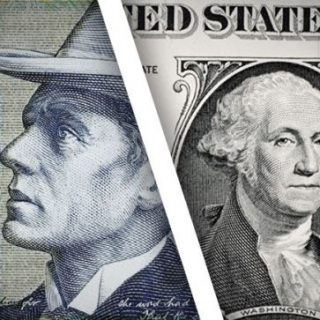


The Australian Dollar (AUD) traded positive in the early hours of the Asian session on Tuesday (03/06), while the US Dollar (USD) remained pressured.
A series of events, including the re-escalation of tensions between the United States and China and the threat of new tariffs, have led to significant outflows from the USD, which has benefited other currencies, such as the Australian Dollar.
US President Trump, tariffs, and trade wars continue to drive sentiment and demand for the US Dollar.
US President Donald Trump recently announced that tariffs on steel and aluminum imports will double starting Wednesday. This announcement, along with disappointing economic data releases on Monday, has added further pressure on the Greenback.
A combination of rising geopolitical risks, a decline in the US Purchasing Managers' Index (PMI) reading for May, and a breakout of key technical resistance could continue to support the AUD/USD pair on Tuesday.
Markets started the week on a risk-off note on Monday, following several tweets from Trump accusing China of violating the interim trade agreement established on May 12. In the agreement, both countries committed to improving their trade relations. Furthermore, the announcement of additional tariffs on global steel and aluminum imports to the US had a positive impact on the AUD/USD pair, pushing it to a significant psychological resistance level of 0.6500.
Furthermore, the May ISM Manufacturing Purchasing Managers' Index (PMI), which measures the health of the US manufacturing sector, declined in May. The index missed analysts' estimates of 49.5, registering a reading of 48.5, indicating a weakening manufacturing sector. (alg)
Source: Fxstreet
The Australian dollar held steady around $0.651 on Thursday, holding onto recent gains after the September trade surplus widened sharply to AUD 3.94 billion (vs. August's revised AUD 1.11 billion), be...
The Australian dollar weakened to around $0.647, hitting its lowest level in eleven weeks. This decline continued as risk-off sentiment in global markets intensified, overshadowing the Reserve Bank of...
AUD/USD firms as traders brace for Australia Q3 inflation data and Fed decision The Australian Dollar (AUD) edges higher against the US Dollar (USD) on Tuesday, extending its winning streak for the f...
The Australian dollar (AUD) rose to around $0.656 on Tuesday, its highest level in nearly three weeks. This increase was primarily due to the weakening US dollar (greenback). US market participants aw...
The Australian dollar strengthened against the US dollar on Wednesday, recouping the previous session's losses. This boost came from comments by RBA Assistant Governor Sarah Hunter: recent data appear...
Japanese stocks are higher thanks to a weaker yen and hopes for domestic earnings growth. Tech and energy stocks are leading gains. NEC is up 2.7% and Inpex is 2.3% higher. Meanwhile, Honda Motor is down 3.8% after it cuts its fiscal-year earnings...
China has begun designing a new rare earth licensing regime that could speed up shipments, but it is unlikely to amount to a complete rollback of restrictions as hoped by Washington, industry insiders said. The Ministry of Commerce told some rare...
Gold edges higher in early Asian trade amid signs of U.S. economic weakness which typically enhance the safe-haven allure of the precious metal. The University of Michigan survey's headline index fell to 50.3 in November, from 53.6 last month,...
 European stocks fell on Friday as investors digested more quarterly earnings, but weekly losses were inevitable, with concerns regarding overheated...
European stocks fell on Friday as investors digested more quarterly earnings, but weekly losses were inevitable, with concerns regarding overheated...
 Two weeks before the US Federal Reserve's final meeting, with the federal government's data taps closed, Atlanta Fed staff bolstered their economic...
Two weeks before the US Federal Reserve's final meeting, with the federal government's data taps closed, Atlanta Fed staff bolstered their economic...
 US stocks rebounded from early losses to close mostly higher on Friday amid hopes that Congress members were making progress toward ending the...
US stocks rebounded from early losses to close mostly higher on Friday amid hopes that Congress members were making progress toward ending the...
 European markets opened higher on Friday (November 7th), recovering some of the previous session's losses amid concerns about an AI bubble. The...
European markets opened higher on Friday (November 7th), recovering some of the previous session's losses amid concerns about an AI bubble. The...